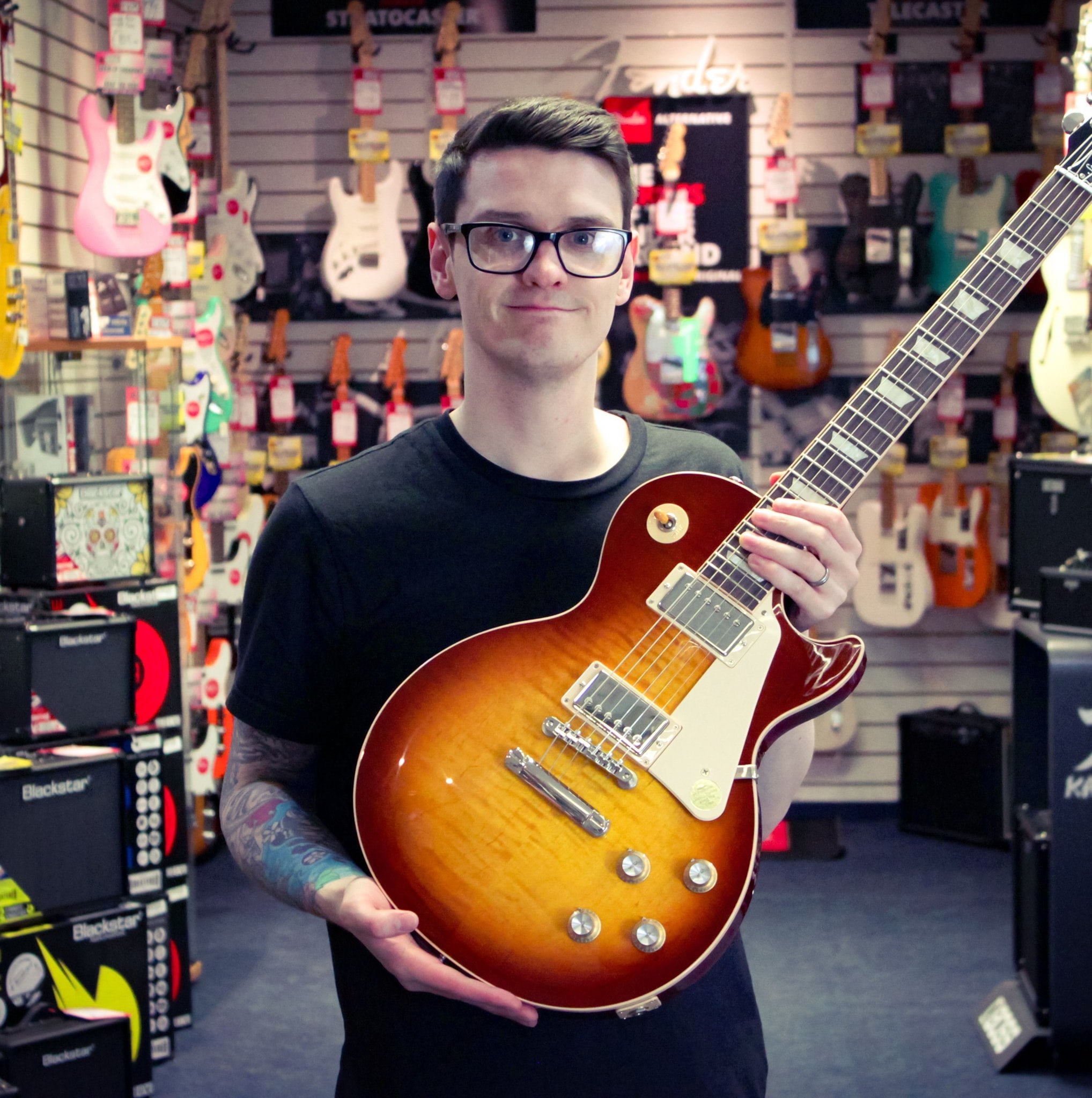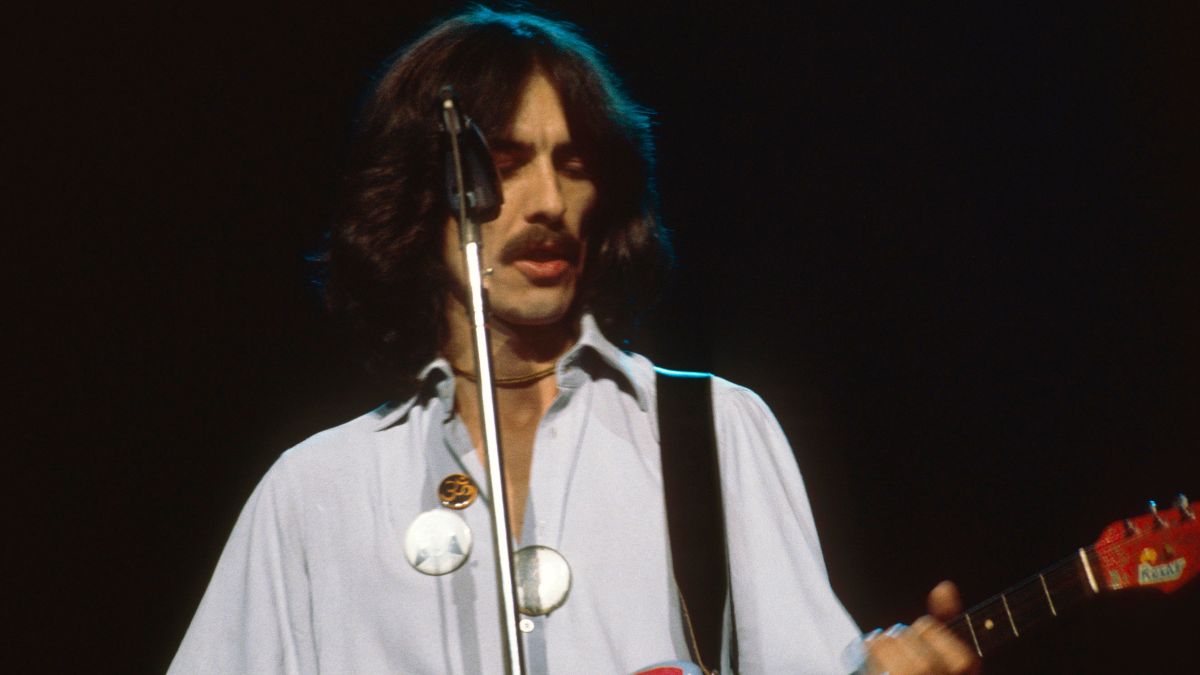Best blues guitars 2025: My pick of the best guitars for playing blues
Get your best pentatonic licks ready for the top blues guitars from Gibson, Fender, Yamaha, and more

I’ve always found that almost every guitarist has a shared connection with the blues. It’s one of the most inspiring genres in its own right, but it’s also where so many of us first cut our teeth on pentatonic licks. There’s nothing particular about the blues that requires a specific guitar. In fact, many legendary blues guitar players could shred an emotional response from even the cheapest guitar-shaped object. That said, certain aspects of the best blues guitars make them perfect for the genre, whether that's warm-sounding pickups, excellent sustain, or rich harmonic overtones.
Thanks to legends like BB King, Albert King, and Rory Gallagher, the blues is now inseparable from the electric guitar. And after nearly a decade working in a busy guitar shop, I’ve seen first-hand what players gravitate towards when they’re chasing that unmistakable bluesy feel. That’s the experience I’ll be drawing on as I pick out the best guitars for playing blues today.
Maybe you’re after a certified classic like the Gibson ES-335, a guitar that’s graced the hands of countless legends and remains a hall-of-fame choice. Or perhaps you want something with a more modern edge, like the Yamaha Revstar Element RSE20, which puts a fresh spin on the classic two-humbucker formula and is superb value for money. Either way, there’s no shortage of options out there for this evergreen genre.
If you’re new to the blues, make sure you go check out our FAQ section before you pull the trigger. I’ve also curated a how to choose section for those totally new to buying a guitar, and a glossary of key terms that will get you up to speed on blues guitar lingo. For the blues veterans out there, keep scrolling to see our top picks…
My top picks

There are few relationships in guitar as iconic as BB King and Lucille, which is why the Gibson Original ES-335 sits at the top of our list. From the stunning good looks to the iconic semi-hollow sound, this guitar embodies the blues with its versatile tones and excellent playability.
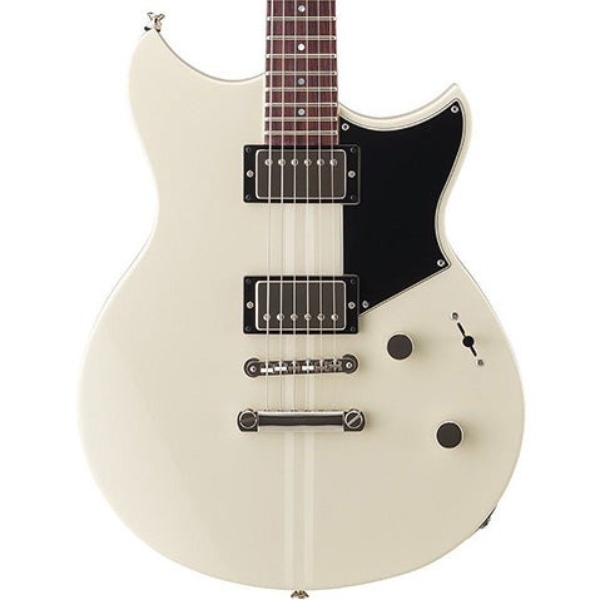
This Yamaha RSP02T does an amazing job for blues guitar lovers, and it doesn't cost the earth either. Packing two humbucker pickups for salacious overdrive sounds, the solid mahogany body ensures excellent sustain, making this an amazing guitar for standout lead work or nuanced rhythm playing.

At the other end of the scale, we’ve got the ever-present Fender American Vintage II 1957 Stratocaster. One of the most versatile guitars in the world, nothing says Blues quite like a classic SSS Strat. From Hendrix to SRV, there’s a reason this guitar has found its way into the hands of many a blues guitar legend.
Best overall
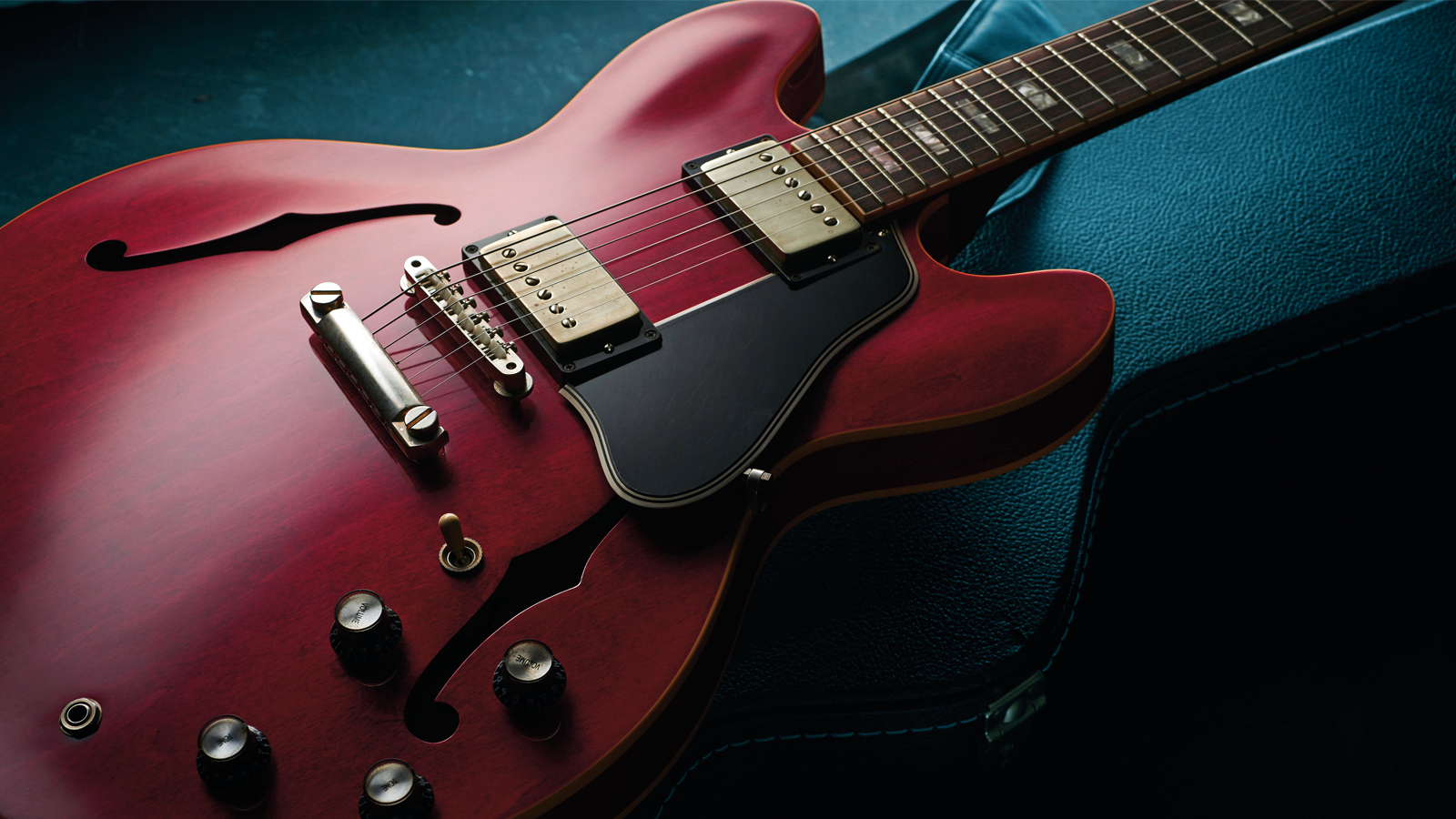
1. Gibson Original ES-335
Our expert review:
Specifications
Reasons to buy
Reasons to avoid
✅ Buy if you want a certified classic: The list of blues legends who have wielded an ES-335 should be more than enough to convince you of its bluesy pedigree.
❌ Avoid if you prefer a small guitar: The ES-335 is quite a large guitar, so not ideal for smaller players to wield.
Overview: The list of players who have wielded an ES-335 to devastating effect is as long as your arm, and it’s easy to see why. Its rich, complex, bell-like tone has a way of pulling you in and inspiring you to play away the blues.
Build Quality: There have been countless versions of the 335 over the years, but the current iteration offered by Gibson stays true to the 1960s era of this gorgeous semi-hollow. The laminated maple and poplar body, maple center block, and mahogany neck are all classic touches that convinced blues heroes of its quality — and the latest model carries that same tradition forward.
Playability: With a beautifully playable, hand-rolled, rounded C-profile neck, the ES-335 practically dares you to keep jamming over backing tracks for hours. The double-cutaway offers superb upper fret access, while the glassy nitro finish, available in options from classic Sixties Cherry to the striking Dark Purple Burst, adds plenty of visual appeal for players of different tastes.
Sounds: The sweet, calibrated T-Type humbuckers and hand-wired control assembly deliver an unmistakable tone that sits right at the heart of Nashville. Anyone chasing an instantly recognizable blues voice will feel right at home here. The Gibson ES-335 and the blues are so intertwined that it is hard to separate the two. If you are looking for one of the finest blues guitars available today, this timeless instrument is hard to beat.
Best budget

2. Yamaha Revstar Element RSE20
Our expert review:
Specifications
Reasons to buy
Reasons to avoid
✅ Buy if you want something blues-capable on a budget: This Yamaha guitar is incredibly well-made, making it a great choice for the blues player on a budget.
❌ Avoid if you like traditional finishes: I’ve heard from players that Yamaha’s finish choices can be polarizing.
Overview: It shouldn’t come as a surprise to see a Yamaha guitar on a list of the best blues guitars, with legends like Carlos Santana having favored the old-school Yamaha SG back in the day. While the SG is still available, we’ve decided to include its younger, and equally cool, sibling, the Yamaha Revstar RSE20.
Build Quality: The RSE20 carries Yamaha’s impressive craftsmanship and attention to detail. Its chambered mahogany body makes it lightweight and comfortable to wield, while build quality is rock solid thanks to the usual excellent construction from Yamaha.
Usability/Playability: Although up-and-coming blues ace Chris Buck makes playing look effortless, Yamaha guitars like the RSE20 certainly encourage slick performance. The neck feels smooth and fast, while the 12-inch radius provides a flat enough surface for soulful bending with the jumbo frets. It’s the kind of guitar that begs you to dig into modern blues licks and once you do, you’ll see why.
Sounds: The humbucker pickups are really powerful, perfect for searing lead guitar tones. They respond beautifully to overdrive, and sound really nice when played clean too. Combined with the chambered mahogany body and a set neck you get plenty of sustain for those epic bends.
Best Strat

3. Fender American Vintage II 1957 Stratocaster
Our expert review:
Specifications
Reasons to buy
Reasons to avoid
✅ Buy if you want a blues guitar with the utmost versatility: It doesn’t get more all-round than the Strat’s trio of single coil pickups.
❌ Avoid if you prefer the warmth of a humbucker: A single coil has a very distinctive sound, and some players just prefer ‘buckers for the blues.
Overview: It seems like the humble Fender Stratocaster has always been the weapon of choice for the trailblazer. The incredibly versatile nature of the Strat has meant that guitar innovators such as Hendrix, Clapton, or SRV were able to bend the Fender classic to their will, resulting in some of the most remarkable guitar tones of all time.
Build Quality: We could've picked several Stratocasters for this guide, but we succumbed to the vintage charms of the American Vintage II 1957 Strat. This retro-inspired axe features a plethora of period-correct specifications, such as an Alder or Ash body with a Nitro lacquer finish and a chunky 1957 ‘V’ neck with a vintage 7.25" radius fingerboard.
Playability: Vintage tall frets ensure those big blues bends are a breeze, offering a phenomenal playing feel for soul-searching lead guitar work. For those after the vintage sound and feel of a golden-age Fender, the American Vintage II series is most definitely for you.
Sounds: The three Pure Vintage '57 single-coils deliver a smooth top end, dynamic lows, and a rounded midrange. They are ideal for a wide palette of blues tones, from bend-heavy, soul-drenched leads to spanky riffs full of swagger.
Best Les Paul
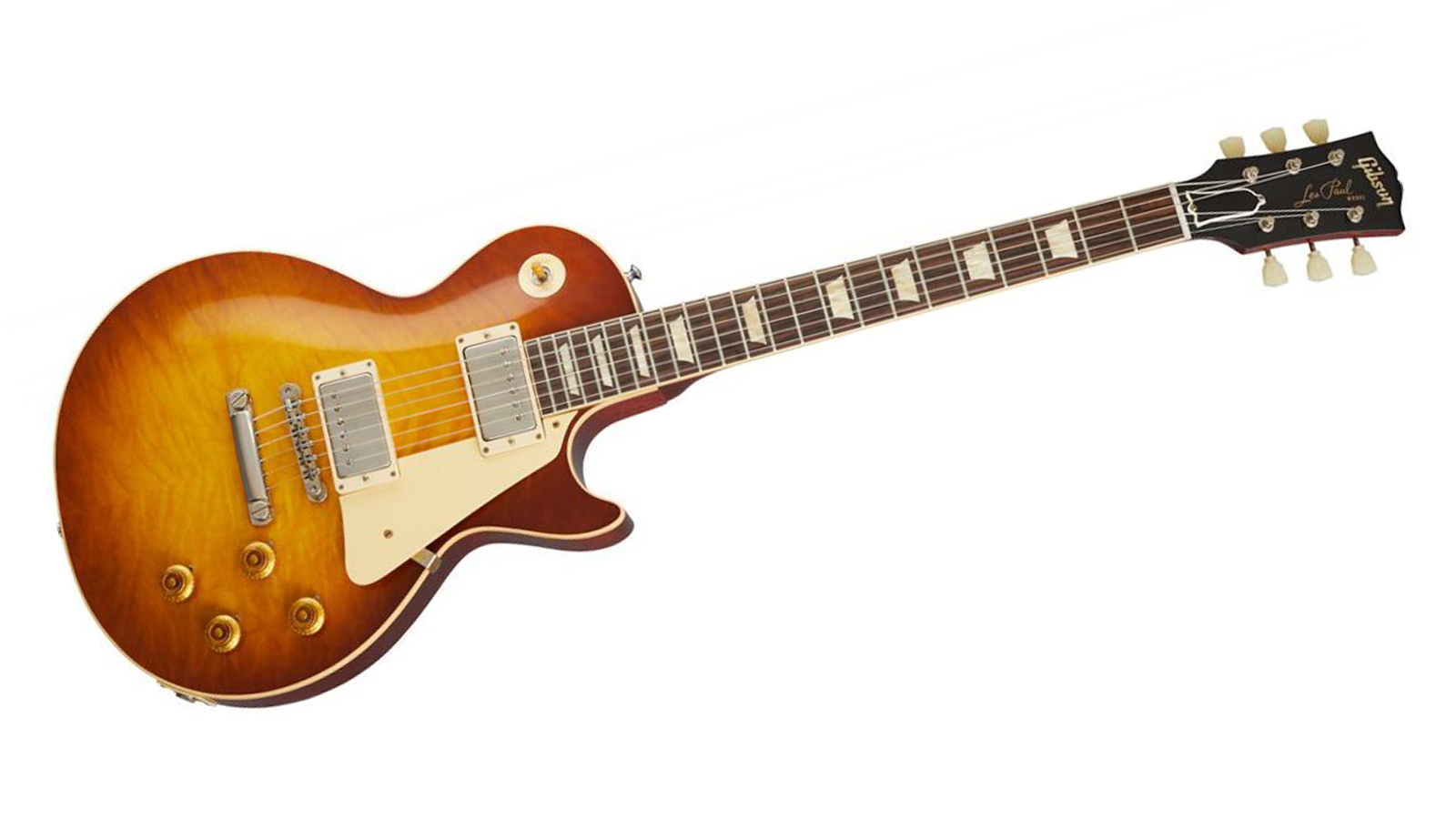
4. Gibson Custom Shop 1959 Les Paul Standard
Our expert review:
Specifications
Reasons to buy
Reasons to avoid
✅ Buy if you want the ultimate Les Paul for blues: For many players, this is as close as you’ll get to one of the most iconic guitars in music history.
❌ Avoid if you don't like heavy guitars: If your back has seen better days, this LP will feel heavy when playing standing up.
Overview: There are a handful of guitars out there that have taken on a whole legend of their own and become, in some ways, more famous than the players who wielded them. Peter Green's "Greeny" has to be one of those guitars. This mythological '59 Les Paul is responsible for some of the most replicated guitar sounds of all time - and the reason modern LPs have an out-of-phase setting!
Build Quality: Gibson has used state-of-the-art technology to capture every little detail - from laser-scanning the necks to get the exact profile to recreating the plastics down to a molecular level. Even the finishes on offer are color-matched shades of sunburst to best represent the original models that are so sought after.
Playability: This guitar’s neck is near perfect. Instead of feeling like an uncomfortable baseball bat, the ’50s rounded medium C profile has just the right amount of chunk for a solid grip without making it difficult to reach across all six strings. There’s no weight relief here, but Gibson has opted for lightweight mahogany to take a bit of heft out of the equation. That said, if you’ve got a bad back, this still isn’t what you’d call a featherweight.
Sounds: If you are chasing the tone of the blues rock greats, such as Peter Green, Gary Moore, and Billy Gibbons, then you're going to need your very own '59 Les Paul. The Custombuckers are the closest thing possible to a vintage PAF and after years of research, Gibson has made that famous tone a little bit closer to some people’s reality. For us, Gibson is making the best recreations of these priceless guitars they have ever done - and although they may be expensive, they are a damn sight cheaper than an original.
Best Tele
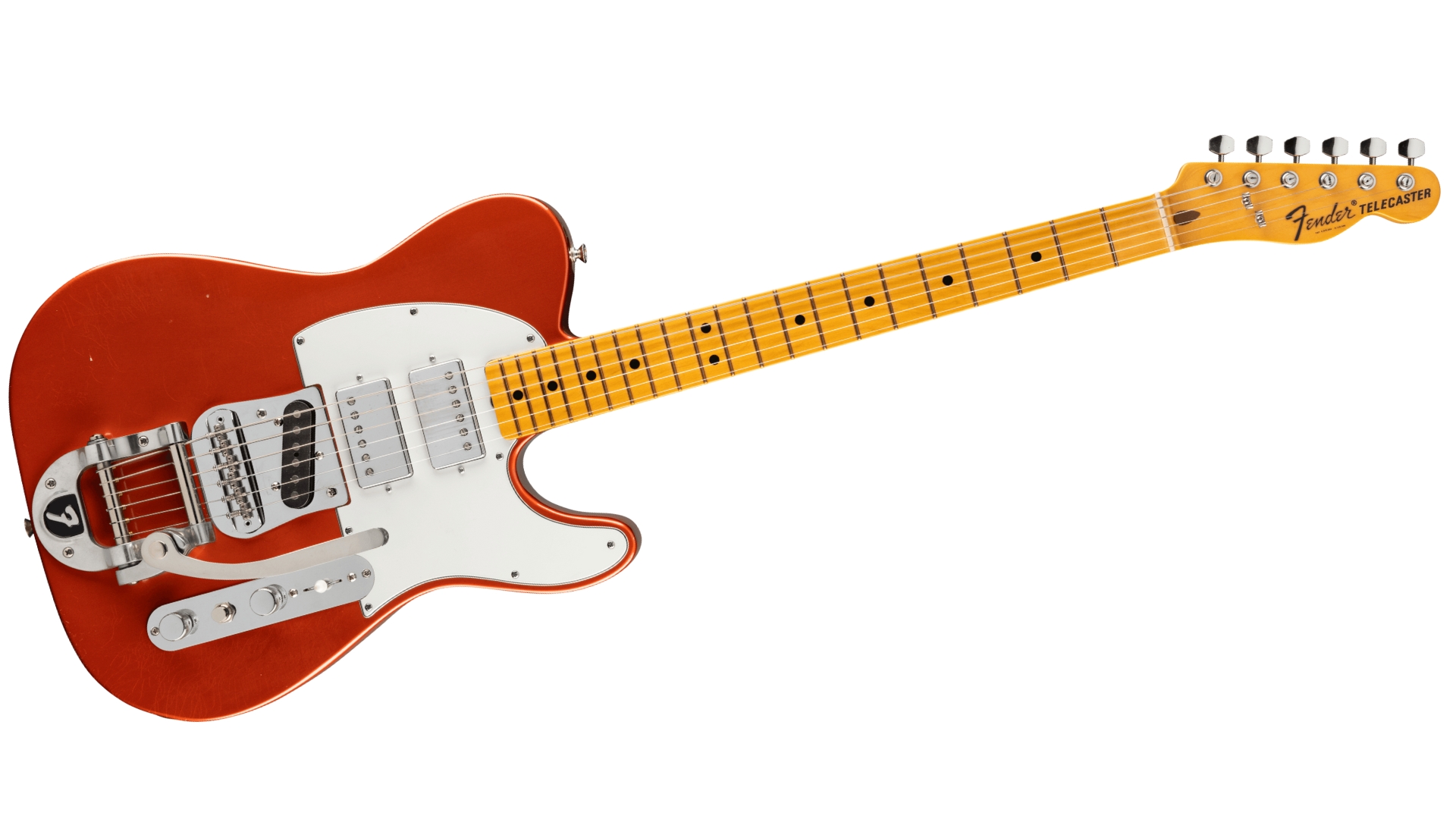
Specifications
Reasons to buy
Reasons to avoid
✅ Buy if you want a Tele with serious attitude: The Red Dog has the snarl, sparkle, and sustain to cover everything from rootsy blues to stadium rock.
❌ Avoid if you prefer traditional single-coil twang. This one trades some of that classic Tele brightness for muscular drive and warmth.
Overview: One glance at the Red Dog Telecaster and you can tell this isn’t your average Tele. Inspired by Mike Campbell’s heavily modified 1972 original that powered Tom Petty & The Heartbreakers’ Refugee, this model from Fender’s Stories Collection captures that same road-worn, high-octane spirit.
Build Quality: The alder body is finished in a striking Red Dog Red, Fender’s custom cousin of Candy Apple Red, complete with light finish checking courtesy of the Heirloom nitrocellulose process. The details are spot on, from the ’70s “F” tuners and black logo to the maple neck and matching fingerboard.
The Bigsby bridge and “Destruct” boost circuit give this guitar a unique edge, both visually and sonically. One fun replication is the cable tie holding down the Bigsby, a trick that Campbell’s guitar tech used so he wouldn’t lose the spring when restringing backstage.
Usability/Playability: The medium “C” neck profile is fast and familiar, with a 7.25-inch radius and narrow vintage frets that offer an authentic feel without fighting you. It plays with that old-school Fender charm, smooth under the fingers but responsive enough for expressive bends and slides. While it’s slightly weightier than a standard Tele, the balance is solid, and the Bigsby adds a touch of classy vibrato for extra flavor.
Sounds: Boy, does the Red Dog have plenty of bark. The two full-size humbuckers and single-coil bridge pickup deliver a wide sonic spectrum, from warm, creamy rhythm tones to biting, overdriven leads. Hit the push-button “Destruct” boost and you’ll unleash a punchy gain lift that’s perfect for solos or fattening up your tone. It’s a Tele with muscle, tailor-made for players who like their blues with a touch of grit.

"On the bridge pickup, the guitar delivers pure traditional Tele twang and makes a great option for spikier leads and meaty single-note wound-string riffs alike. It’s still one of the greatest bridge-position tones in the electric guitar world, so whichever Dr. Frankenstein modded the Red Dog in the first place, they were wise to leave out the humbucker there."
Read more: Fender Stories Collection Mike Campbell Red Dog Telecaster review
Best with P-90s
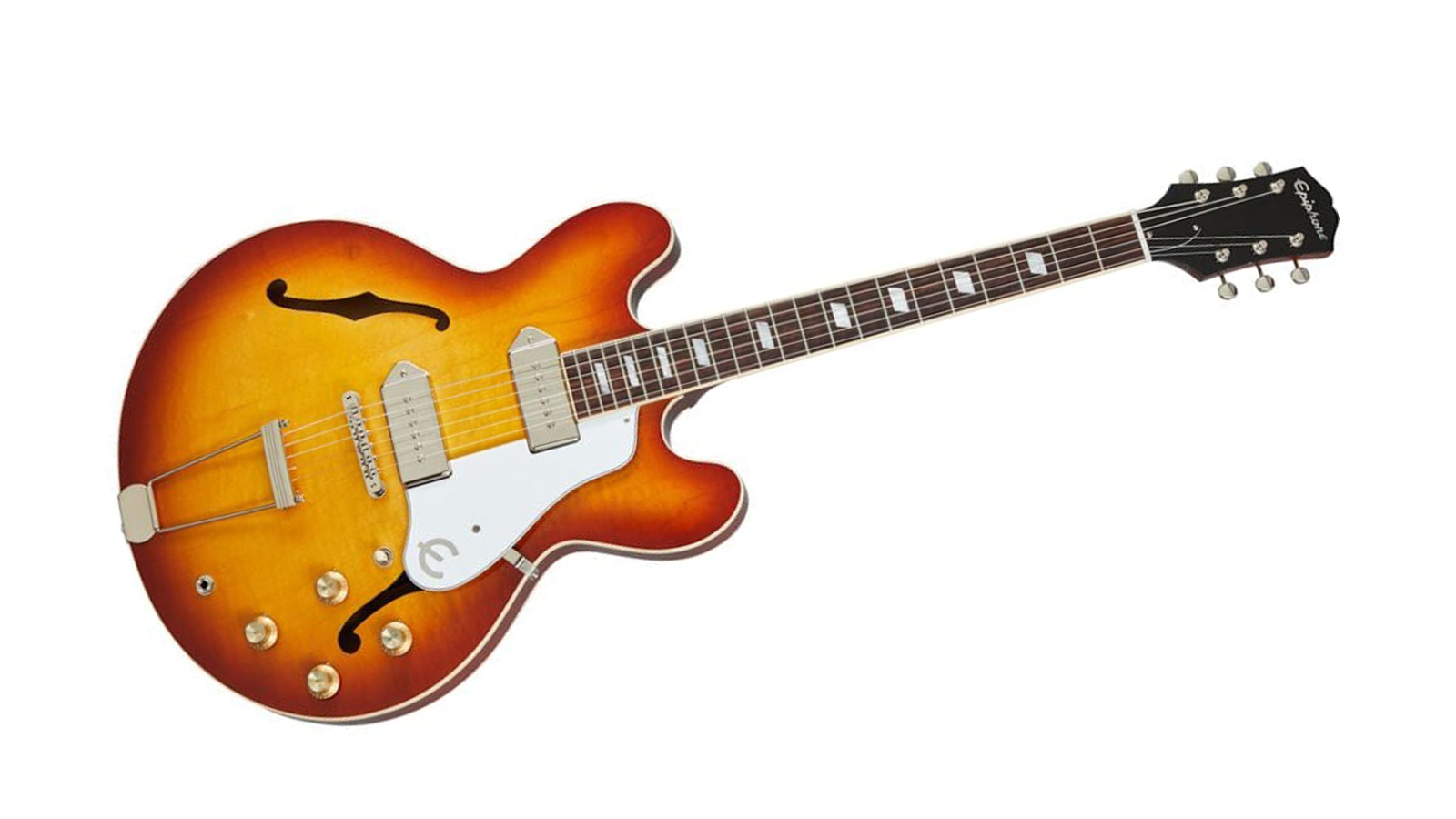
6. Epiphone USA Casino
Our expert review:
Specifications
Reasons to buy
Reasons to avoid
✅ Buy if you can’t get enough of P-90 bite: The Gibson USA P-90 Dogear pickups are something to behold.
❌ Avoid if you’re worried about feedback: Being fully hollow, some may be put off at the prospect of howling feedback, particularly in high-gain situations.
Overview: Well, after 50 years of being made in various factories - and countries - the Casino has finally come home to the USA, and we couldn't be more excited about it. So many great players have opted for the deep, hearty tone of the Casino, such as the unstoppable Keith Richards, the late great John Lennon, and modern blues master Gary Clark Jr, to name a few.
Build Quality: Although this guitar may look similar to its ES-335 brethren above, it's a somewhat different animal. The Casino forgoes the maple center block in favor of fully hollow construction, resulting in a slightly warmer, woodier tone. Other nice touches include an Indian rosewood fingerboard and a stylish thinline trapeze tailpiece, adding a touch of class.
Playability: Also, the fully hollow construction makes the Casino lighter than the ES-335, making it very comfortable to play standing up. The familiar rounded ‘C’ neck is a perfect launch pad for smooth blues licks and the double-cutaway allows access all the way up the fretboard.
Sounds: The P-90 pickup means this Epiphone has its own sonic identity, perfect for not only the blues but also as a jazz guitar and even rock - just be careful with your volume, as they do like to squeal. Okay, this might not be a real vintage Casino, but frankly, it's as close as you will get, and with the constant rise in vintage guitar prices, it's the most cost-effective purchase you can make - if you want an American-made Epiphone.
How to choose
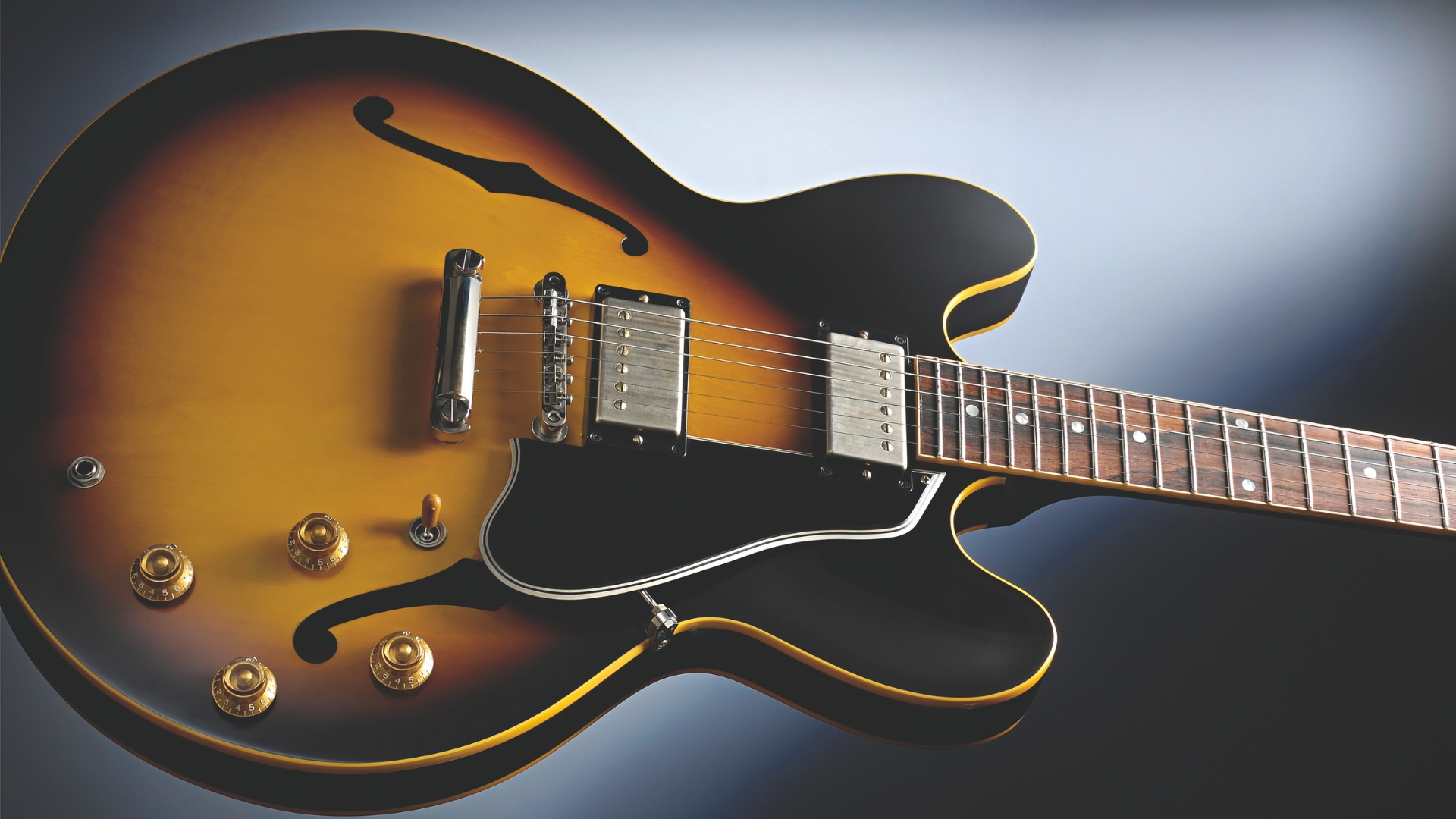
If you’re considering your first blues guitar purchase, there are a few things to think about. I’ve crafted this section, calling on my experience selling guitars in the instrument industry, as a step-by-step guide you can use when looking for the best blues guitar. I’ve helped hundreds of players find the right guitar for their style, and I’m confident this process will work for you too.
1. Solid, semi-hollow, or fully hollow
You can trust Guitar Player.
First things first, what body style do you want to go for? A solid-body electric guitar may be the most practical choice, as they are more compact, have plenty of sustain, and feedback won’t be as much of an issue.
On the other hand, you can opt for a semi-hollow, like the ES-335. With a more breathy, warm, and resonant tone, semi-hollow guitars have been a go-to choice for blues legends like B.B. King and modern players such as Christone "Kingfish" Ingram.
Lastly, a fully hollow guitar, like the Epiphone Casino, offers a beautiful woody tone, lightweight construction, and a unique sonic identity. Like semi-hollows, fully hollow guitars can suffer from feedback, which becomes more noticeable when using high gain.
2. Pickups
Next up, think about pickups. The three main types — single-coils, P-90s, and humbuckers — all have their pros and cons for blues. Humbuckers are arguably the most popular, with their warmth, roundedness, and body making them a great choice for soulful playing.
On the other hand, P-90s, which offer more midrange bite and clarity, are perfect for certain blues styles. Lastly, single-coils are bright, articulate, and spanky. Players like Rory Gallagher used single-coils in all their bluesy glory. Ultimately, this comes down to taste — there’s no right or wrong choice.
3. Neck profile
Finally, it’s worth thinking about the neck profile. This will ultimately determine how comfortable you feel holding your guitar. Some players prefer a chunkier neck that fills the palm for gripping cowboy chords, like a U-shape, while others prefer a slimmer, more modern neck if they want to play fast, fluid licks, like a soft-C profile.
FAQs
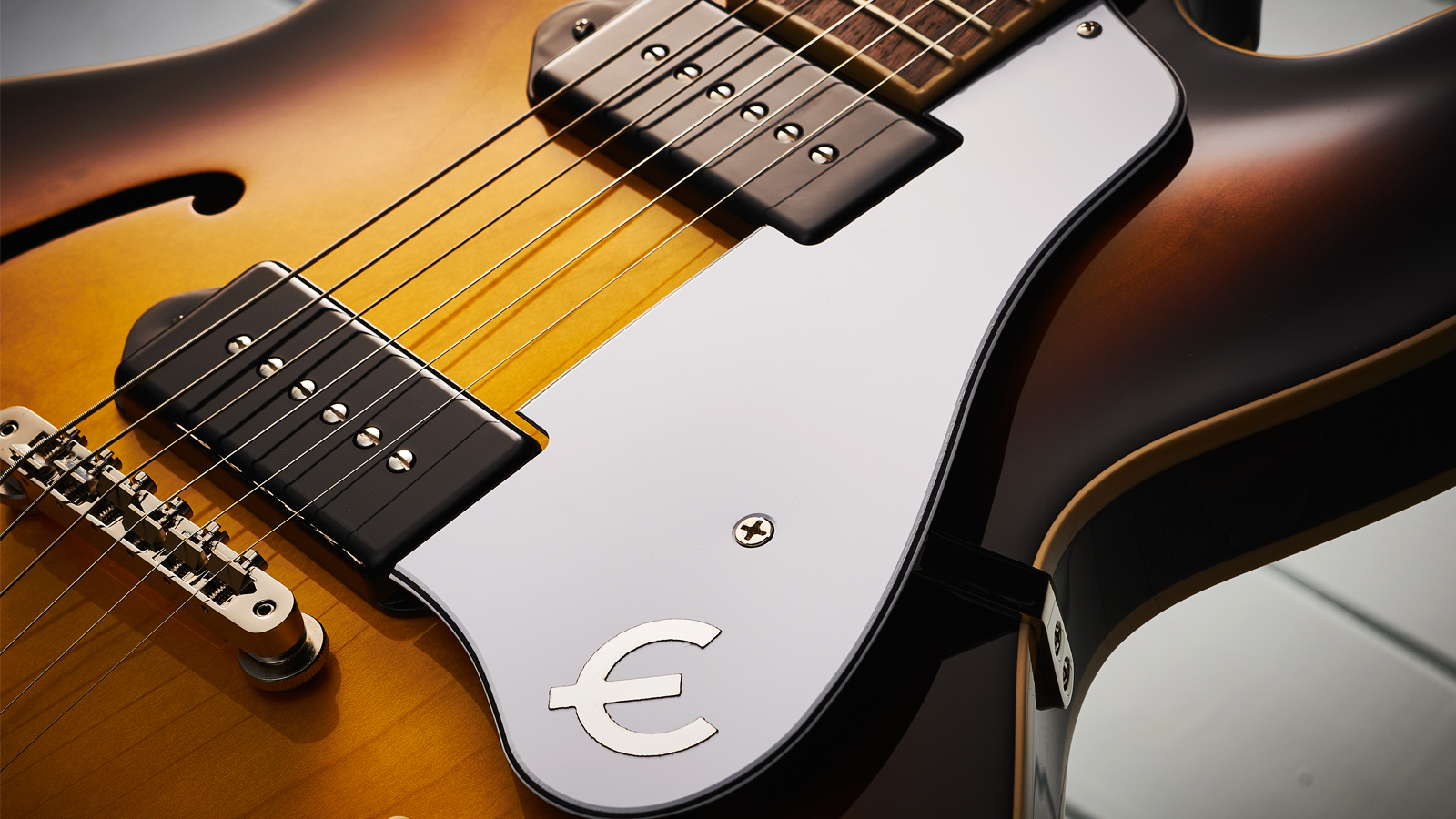
Are single coils or humbuckers better for blues?
The honest answer is that neither is better than the other. It purely comes down to personal taste, playing preference, and the style of blues you want to play. Many players gravitate toward humbuckers for their warmth and full-bodied character, which suit more soulful and expressive tones in the vein of B.B. King. On the other hand, single-coils – including P-90s – have more brightness and attack, a sound that players like Rory Gallagher and Muddy Waters have used to great effect.
Should I choose a solid body, semi-hollow, or hollow body?
This really depends on the tone and feel you’re after. Solid-body guitars, like a Tele or Strat, are often the most practical choice for blues; they're comfortable, versatile, and less prone to feedback when you crank up the volume. Semi-hollow guitars, such as the Gibson ES-335, deliver a touch more warmth and resonance thanks to their partially hollow design, making them great for expressive, dynamic blues styles.
If you’re chasing a smoky tone, a fully-hollow guitar like the Epiphone Casino might be the one. They’re light and beautifully resonant, but you’ll need to be mindful of feedback, especially with higher gain settings. Ultimately, all three can sing the blues; it’s just about which voice speaks to you most.
What neck profile is best for blues?
Much like the pickup debate, the best neck profile for blues is the one that feels most comfortable for you. Some players prefer a chunkier neck for more grip and control, as a ‘D’ or ‘U’ profile can make big bends feel more stable and let you really dig into your notes. On the other hand, a thinner neck profile will suit players who like to move quickly through pentatonic licks and runs. Ultimately, the best neck for blues is the one that feels right in your hands.
How does the fretboard radius affect string bending?
When searching for a guitar, you’ll come across different fretboard radii. The fretboard radius, or the curvature of your fretboard, typically measures around 7.25” or 9.5” on traditional models, while modern guitars often feature flatter radii like 12” or even 16”. A flatter radius makes string bends easier and smoother, as there’s less chance of the string choking out during a bend. In general, the smaller the number, the more curved the fretboard will feel under your fingers.
Does the tonewood matter for blues guitar?
When it comes to electric blues guitars, tonewood plays a smaller role compared with an acoustic guitar. Electric tone is shaped more by pickups and amps, so the subtle differences between woods can sometimes be less noticeable. That said, tonewood still affects sustain, resonance, and overall feel, so it’s worth considering. For acoustic blues guitars, however, tonewood is crucial. Because the sound is produced entirely by the instrument itself, the type of wood used has a far greater influence on the tone you hear.
Do I need a specific guitar to play slide?
Not necessarily. You can play slide on just about any guitar, though you might need to make a few adjustments. The main thing is action height; if it’s too low, the slide will rattle against the frets instead of gliding cleanly. While low action feels great for standard playing, raising it slightly gives you more room to move the slide smoothly. Some players don’t mind a little rattle, as it can add character, but too much will choke your notes and kill sustain.
Is a Strat or Les Paul better for blues?
Like many things in music, there isn’t necessarily a ‘better’ for blues guitar. Whether you choose a Strat or Les Paul will depend on your tastes. A Stratocaster is much brighter, spankier and more articulate. If you are a big fan of Stevie Ray Vaughan or Jimi Hendrix, you’ll likely prefer a Strat. Alternatively, a Les Paul is warmer, has a bit more body and roundness. The ‘buckers in a Les Paul have been the go-to choice for a plethora of different blues guitarists, and if you like Joe Bonamassa or Peter Green, a Les Paul will be up your street.
Do P-90 pickups work for blues guitar?
Absolutely. P-90s work very well for blues. Take a look at the Epiphone Casino or Yamaha RSP02T, both are equipped with a pair of P-90s and are played by blues guitarists such as Chris Buck and Gary Clark Jr. The grit, thickness and clarity make a perfect combination for blues, whilst the mid-range punch they provide is fantastic for standing out in a mix. They also respond beautifully to dynamics, meaning you can go from smooth, soulful cleans to gritty, overdriven tones just by adjusting your picking attack or rolling back the volume knob.
Can I get a blues tone with a modern guitar?
Generally speaking, you can get a great blues tone with a modern guitar if you dial it in correctly, especially by tweaking your amplifier settings. Rolling back the tone and gain controls can help tame any harshness and bring out a smoother, more expressive sound. That said, if your guitar has active pickups or ones designed for high-gain playing, it might lack some of the warmth, body and soul that traditional blues tones are known for.
Key terms
- Action: This refers to the height of the string from the distance of the fret. High action can be harder to play, whilst too low action can cause fret buzz.
- Bridge: The metallic part of your guitar that anchors the string ends to the body.
- Coil split: A type of electrical switch that turns off one of the two coils in a humbucker to produce single-coil tones.
- Fret buzz: This is when you hear a string buzz against the fret because there isn’t enough height for it to oscillate properly.
- Humbucker: A type of electric guitar pickup featuring two wired coils to cancel out any hum typically found in a single-coil pickup.
- Intonation: Correct intonation is when the open string and the fretted note are in tune with each other. This is achieved by correctly adjusting the bridge saddles.
- Neck profile: This is the cross-section of a guitar’s neck, typically described as a letter, i.e., ‘C’, ‘U’ or ‘D’.
- P-90: A type of single-coil pickup whose bobbin is shorter and wider than a standard single-coil, resulting in a unique tone with a strong mid-range punch.
- Pickup: The part of an electric guitar made up of magnets and coiled wire that detects vibrations made by guitar strings and converts them into an electrical signal to be amplified.
- Radius: This is the measurement of the curvature of your guitar’s fingerboard.
- Semi-hollow: A type of guitar whose body has hollow ‘wings’ attached to a solid center-block.
- Single-coil: This is a type of guitar pickup featuring a single coil wire that is wrapped around a magnet.
- Slide: A tube typically made of metal, glass, or ceramic that is used to create smooth glissando tones and is featured heavily in blues genres.
- Sustain: This is the length of time a note played on a guitar will ring out before fading away.
- Tonewood: A type of wood selected for particular tonal properties. For example, maple is considered a bright-sounding tonewood, whilst mahogany sounds much warmer.
- Vibrato: A technique or effect that creates a wavy sound by fluctuating the pitch of a fretted note.
How we test
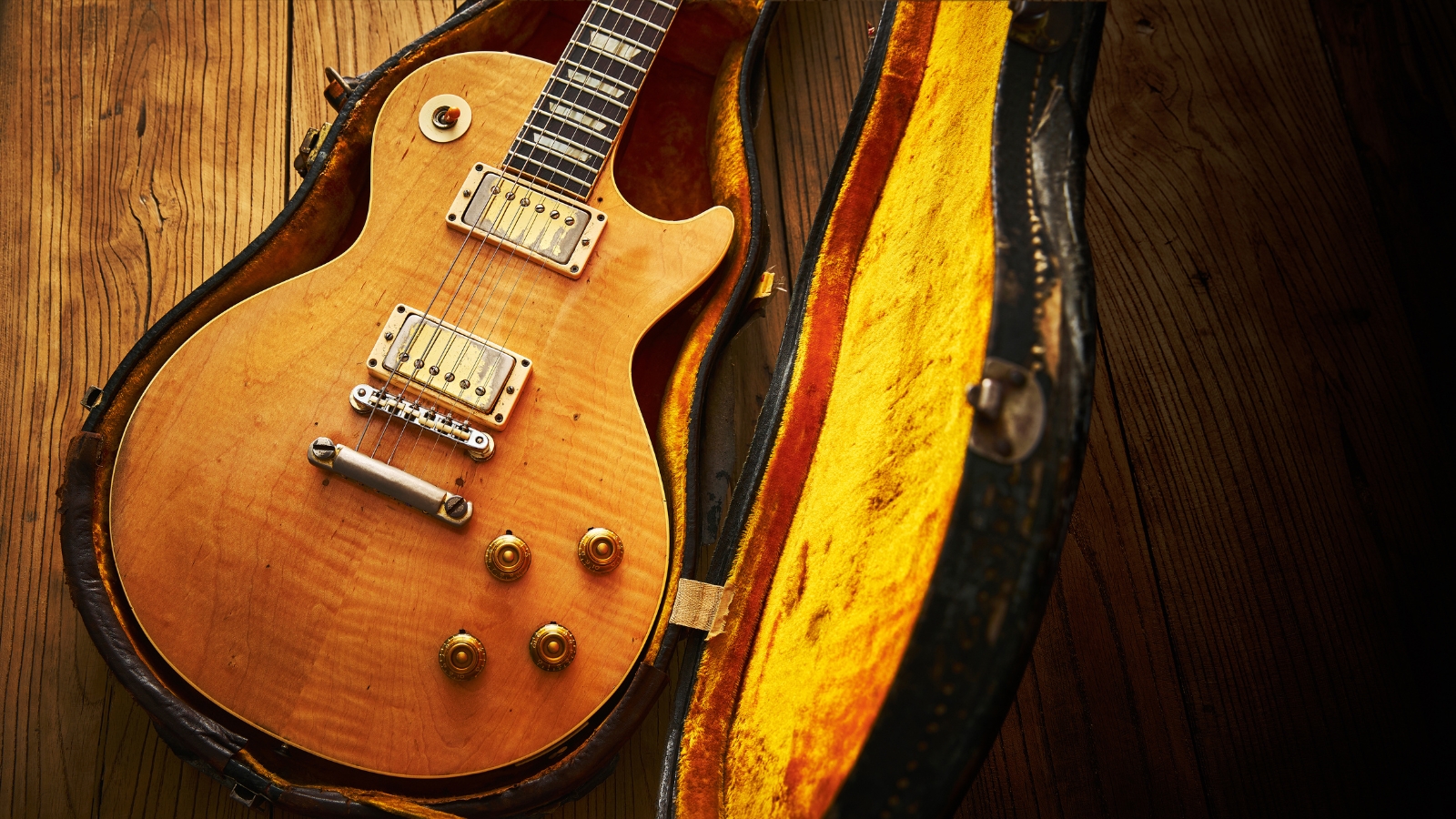
At Guitar Player, we are a team of passionate guitarists who have immersed ourselves in the world of blues music. With our deep appreciation for the blues, we have thoroughly tested and played numerous guitars to identify the best instruments for capturing that most soulful of sounds.
To compile our list of top blues guitars, we combine our hands-on experience, extensive research, and in-depth discussions with our editorial team. We take into account factors such as playability, tone, craftsmanship, and historical significance to ensure we showcase the finest blues guitars available.
As avid blues players ourselves, we understand the significance of finding the perfect instrument to convey the emotional depth and expression of this genre. Our mission is to provide reliable and informed recommendations to help fellow guitarists discover the ideal blues guitar that resonates with their individual style and musical preferences.
Whether you're wailing on a Delta blues riff or bending strings with Texas-style licks, our goal is to empower you to unlock your blues potential with the best guitars for the job.
Read more on how we test gear and service at Guitar Player.
Related buying guides
- Check out the best Martin guitars
- Plug in with one of the best guitar cables
- Take a look at the best acoustic guitar strings
All the latest guitar news, interviews, lessons, reviews, deals and more, direct to your inbox!
First and foremost, I'm a guitar enthusiast – a fanatic, some might say. I'm a firm believer that most of the world's problems can be solved with a Gibson SG and a catastrophically loud amp. Before writing about guitars for a living as a Senior Deals Writer on Guitar Player, I worked in music retail for 7 years, giving advice on guitars, basses, drums, pianos, and PA systems. I also have a passion for live sound; I'm a fully qualified sound engineer with experience working in various venues in Scotland.
- Ross Holder
- Matt McCrackenJunior Deals Writer
